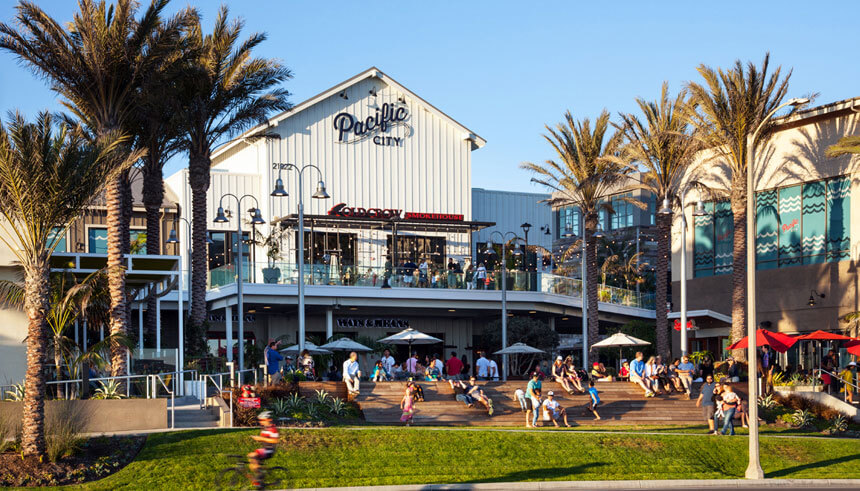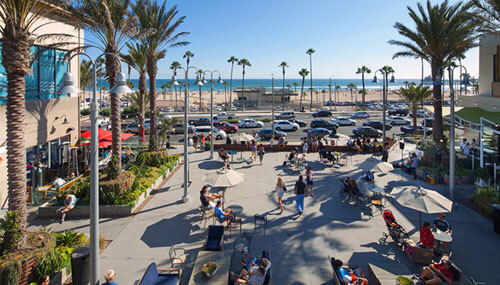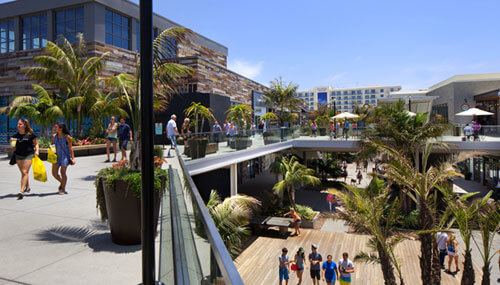U.S.-Asia Business
The Future of Shopping and the Modern Mall
By Daisy Lin

The malls of the future will be experiential and technologically connected town centers.
Chances are, you bought something at a shopping mall recently, or saw a movie there or ate there. Malls have become as American as apple pie; and yet, as America changes, so does the mall.
The modern fully-enclosed shopping mall was created in the Midwest following World War II, the automobile boom and the migration of people into suburbs. A climate-controlled, central retail hub surrounded by parking was a hit back in the 1950s, and malls spread across the country and the world.
But times have changed. There are currently about 1,100 enclosed malls in the United States, and real estate analysts at Green Street Advisors estimate that 15 percent of them will close or be repurposed during the next 10 years.
Millennials have surpassed Baby Boomers as the largest living generation in the United States, according to the U.S. Census Bureau. They now number 75.4 million, and are savvy online shoppers who prefer to live in the city near their offices. They value experiences like eating out over material acquisition.
So shopping complexes are changing to adapt.
Take, for example, Pacific City in Huntington Beach, Calif. It is an open-air complex facing the ocean, with an artisanal food market, a gym and spa, a surf shop and other high-end specialty stores featuring reclaimed wood and other beach-inspired materials. Food-related enterprises make up 50 percent of the retail businesses. Just don’t call it a mall.
“We like to call it Huntington Beach’s new front porch,” according to Matt Heller, a vice president and the business development director at The JERDE Partnership Inc., the architectural firm that designed Pacific City. JERDE has been a retail and entertainment development pioneer for almost 40 years, designing the remodeled Santa Monica Place, Universal CityWalk, the Bellagio and hundreds of projects around the world.
“We see what we do as ‘placemaking’ — designing authentic places that people love to visit,” says John Simones, a member of The American Institute of Architects and co-CEO and design director of JERDE. “Making more of what people are yearning for, that feeling of what cities used to be like, with the main street, the market square, the shops that spill out onto the sidewalk.”

"We like to call it Huntington Beach’s new front porch."
Malls as town centers
Modern malls need to serve multiple functions in order to survive in the digital age, according to Heller. “With technology and e-commerce on the scene today, you can get a lot of goods online, so what do these spaces then become? They become community gathering places.”
Sixty-two percent of Millennials say they prefer to live in mixed-use communities that are close to where they work, near city centers, according to The Nielsen Co. “Mixed use usually means the development serves three or more functions – from office space, to residential units, hotels, retail or entertainment,” Heller says. Pacific City, for example, is adding a boutique hotel and apartment homes to its 31-acre complex.
Ironically, this is what Victor Gruen, one of the pioneer designers of the early modern American mall, intended. He had a bigger vision that malls would be an anchor for a much larger planned community, not just pure consumption machines, and became an outspoken critic of his creation. Now, more than a half-century later, his original vision is finally coming true.
A number of massive mixed-use projects around the country are now in the works.
- Seaport Square in Boston will transform land used mostly as parking lots into a 23-acre development that will connect several neighborhoods, including the financial and waterfront districts. The project will create five new streets and more than 20 buildings, including two residential towers. There will also be four public spaces, including a memorial to victims of terrorism. The project is expected to be completed by 2020.
- The Wharf in Washington will convert 24 acres of waterfront along the Potomac River and will include office space, residential, retail, piers, marinas, an entertainment street named Jazz Alley, a rum distillery, a boardwalk and a 6,000-capacity concert hall.
- Hudson Yards in New York will have a 750-seat public school, more than 100 shops, 4,000 residences and an art center.
"We see what we do as ‘placemaking’ — designing authentic places that people love to visit."

Digital innovation and shopping
Malls are now trying to bridge the gap between physical and digital shopping, and several large shopping retailers have created innovation incubators to look for ways to test out new concepts. Westfield Labs in San Francisco recently kicked off an accelerator program for companies that can advance the retail and e-commerce industries. Simon Property Group L.P., the largest U.S. mall owner, has launched a venture capital arm to invest in technology that crosses over between brick-and-mortar and online/mobile shopping, like geo-targeting apps that reward shoppers for going into stores, micro-location beacons that send deals to shopper cellphones based on where they are in a store, and smart parking lots that direct visitors to open spots.
At the Stanford Shopping Center in Palo Alto, Calif., a smart digital directory shows shoppers the best route to get to the store they’re looking for. At some Westfield Corp. malls, you can use your cellphone to guide you from store to store. And these technologies are also being tested in malls internationally. In London, Westfield shoppers can use their cellphones to pay for express parking.
China malls focusing on customer experience
In China, fierce e-commerce competition is forcing developers to find innovative solutions, and the use of virtual reality is quickly growing, ranging from VR roller coasters you pay to “ride,” to entertainment pop-up stores with 4D games, according to Steven McCord, head of retail research, Asia, for Jones Lang LaSalle, a Fortune 500 company that specializes in real estate services and investment management. “Virtual reality technology … seems to be appearing in every city and nearly every mall. It is useful as a foot-traffic driver to help bring in people and keep them in malls for more time.”
Child-related brands are also highly sought after by landlords, McCord says. “These brands can effectively increase foot traffic and promote family consumption.”
McCord adds that mobile payments, like AliPay.com and WeChat Pay, have become standard in China’s malls in nearly all stores. “Now, it is hardly necessary to carry cash. Payment by credit card may have already peaked.”
More than a dozen JERDE projects are under construction in China, and another dozen projects in Asia are in the design phase, with financing help from East West Bank. “There are so many people moving into the urban centers that they forgot about creating great places to come to on the weekends,” Simones says. “We have four projects being built on the outskirts of Shanghai that are mixed-use projects with plazas and parks where people can come and hang out. We’re re-creating this idea of the town center in China, where there is a real need.”

